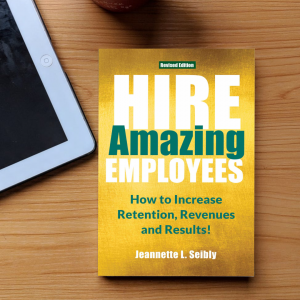
Many would say, “sort of.” Or, “I guess.” Or, “I don’t know.”
The challenge? Many people today are unaware of their talents, gifts, and natural abilities! This includes everyone at every level in a business, nonprofit, entrepreneurship, or other workplace.
Unfortunately, most people fail to recognize and develop the skills and strengths necessary to support their natural talents. Instead, too many people waste time wishing for, being frustrated by, and being jealous of others’ talents.
If they spent that time learning about their own talents, they wouldn’t have to spend money on coaching and training to support goals that don’t honor their talents (e.g., 1099 employee v. W2 employee). The result? They feel like failures instead of winners!
Talents are natural abilities that someone is born with, while skills are learned abilities that come from practice and experience. Upwork
A financial planner worked hard to become a Certified Financial Planner (CFP) and accomplished her goal. She commented, “If someone studied that hard to become a CFP, they must be in the right job.”
Sadly, no. People can achieve degrees and certifications because they must keep their jobs or be eligible for promotions. Or it is due to parental or others’ expectations that they do so. Or because their friends or people on social media said it was the best career choice! (It may have been for that person – but not for you.)
The truth is if you want to grow in your career and life, focus on developing your unique talents, gifts, and strengths to pursue your goals. But first, ensure the goals you are pursuing honor you!
How to Honor Your Talents
It’s essential to identify your natural talents and strengths through:
Self-Reflection: Ask yourself what activities, tasks, projects, classes, and interactions give you joy and satisfaction. They usually feel engaging and fulfilling, and time passes very quickly. You want more of them.
Example: If you love crafting, gardening, or coding, ensure your job or hobbies include a creative outlet!
Feedback from Others: Talk to friends, family, co-workers, mentors, and bosses who know you well. They can provide insights into your strengths and talents that you might need to be made aware of. But don’t buy into everything they tell you since their advice may be more of a reflection of how they achieved their success.
Example: Years ago, a CFO asked if I would work for him in his department. I said, “Thank you, no.” While I have excellent math skills, crunching financials wouldn’t use my talents or support my interests. Just because you’re good at something doesn’t mean it’s the career path for you.
Job Fit Assessment:
- Take a job-fit assessment that provides objective data: occupational interests, thinking style, and core behaviors.
- Review your strengths with an executive coach.
- Beware of myths that often get in the way of recognizing your talents.
Examples of Myths:
- Buying a franchise is easy and guarantees you success. The reality? Too many people buy a franchise and fail. Why? They are uncoachable and think they know how to run a well-established brand better! (Hint: Their thinking style, need to be creative, and/or do it their way got in the way.)
- I’m good at math, so I should be an accountant, engineer, or financial planner. Too many people believe this, and what is often overlooked is that they don’t have the interest to do that type of work. (Hint: There are so many occupations that require logical thinking and the ability to use numbers and metrics; don’t narrow your options!)
- I’d love my job if I had the right boss. That is categorically incorrect! (Hint: If you don’t enjoy your job responsibilities and fail to use your talents, it won’t matter who your boss is or how much you like them.)
Example of Honoring Your Talent: A woman worked hard to graduate as an engineer because her parents and teachers believed it was “the right career” for her. When she received her degree and got her job, she quit two months later. In a moment of insight, she realized she needed to follow her true passion and got a position in human resources where she could work with people daily.
Recognizing Moments of Being in the Zone: Reflect on times when you’ve been so involved in an activity that you lost track of time. These moments can indicate a natural talent, skill, and interest. Look specifically at what you enjoy about the task or project. What is the best way to incorporate this into your current or future job aspirations?
Example: Auto, bike, or computer repair. Working with your hands is a valued talent that pays very well.
Exploring Your Passions: Your passions can often lead you to your natural talents. Think about what excites you and how you can pursue those interests further. Talking with a career coach or executive coach can also be very helpful.
Example: You are great at attracting money for your favorite animal shelter. What would it take to do this full-time or in other nonprofits?
©Jeannette Seibly 2024 All Rights Reserved
 Jeannette Seibly is a Talent Advisor/Leadership Results Coach with over 31 years of practical experience guiding leaders and bosses to improve their hiring, coaching, and managing practices and produce amazing results! And yes, achieving business success always starts with having the right people in the right jobs! She has been an Authorized PXT Select® Partner for over 32 years. Contact Jeannette to learn more about these state-of-the-art job-fit assessment tools or how to coach and manage your people to achieve incredible results.
Jeannette Seibly is a Talent Advisor/Leadership Results Coach with over 31 years of practical experience guiding leaders and bosses to improve their hiring, coaching, and managing practices and produce amazing results! And yes, achieving business success always starts with having the right people in the right jobs! She has been an Authorized PXT Select® Partner for over 32 years. Contact Jeannette to learn more about these state-of-the-art job-fit assessment tools or how to coach and manage your people to achieve incredible results.
A note from Jeannette: Are you using your natural talents, gifts, and strengths effectively? Finding work that honors your talents is important to enjoying your job! If you’re frustrated or confused about how to discover your talents, let’s talk. I have 31+ years of guiding people to uncover and pursue their talents, gifts, and strengths. Contact me now!
 It’s time to talk it out! Are there days you dread managing people, projects, and your team’s financial performance? You’re not alone! Everyone has their blind spots! NOW is the time to get the guidance you need to make the right changes during 2024. I have extensive experience and wisdom guiding bosses and leaders to hire, coach, and manage their teams successfully. The bonus is that they achieve unprecedented results. Contact me to learn more about my in-depth, one-on-one, customized coaching programs.
It’s time to talk it out! Are there days you dread managing people, projects, and your team’s financial performance? You’re not alone! Everyone has their blind spots! NOW is the time to get the guidance you need to make the right changes during 2024. I have extensive experience and wisdom guiding bosses and leaders to hire, coach, and manage their teams successfully. The bonus is that they achieve unprecedented results. Contact me to learn more about my in-depth, one-on-one, customized coaching programs.
 This book (“Hire Amazing Employees”) can help you improve your hiring process, by Nancy Schick, NY Employment Attorney and Mediator. I met Jeannette Seibly a few months ago In this Together Round Table, where I also learned about her book, Hire Amazing Employees. Since my clients frequently struggle with this task, I bought myself a copy and gave several as gifts. The book contains many helpful tips for avoiding the impact of hiring errors. Read the full testimonial here.
This book (“Hire Amazing Employees”) can help you improve your hiring process, by Nancy Schick, NY Employment Attorney and Mediator. I met Jeannette Seibly a few months ago In this Together Round Table, where I also learned about her book, Hire Amazing Employees. Since my clients frequently struggle with this task, I bought myself a copy and gave several as gifts. The book contains many helpful tips for avoiding the impact of hiring errors. Read the full testimonial here.


 It’s time to talk it out! Are there days you dread managing people, projects, and your team’s financial performance? You’re not alone! Everyone has their blind spots! NOW is the time to get the guidance you need to make the right changes during 2024. I have extensive experience and wisdom guiding bosses and leaders to hire, coach, and manage their teams successfully. The bonus is that they achieve unprecedented results.
It’s time to talk it out! Are there days you dread managing people, projects, and your team’s financial performance? You’re not alone! Everyone has their blind spots! NOW is the time to get the guidance you need to make the right changes during 2024. I have extensive experience and wisdom guiding bosses and leaders to hire, coach, and manage their teams successfully. The bonus is that they achieve unprecedented results.  This Book (“Hire Amazing Employees”) Can Help You Improve Your Hiring Process, by
This Book (“Hire Amazing Employees”) Can Help You Improve Your Hiring Process, by 
 What could you accomplish by unleashing your inner leader now? Are there days you dread managing people, projects, and your team’s financial performance? You’re not alone! Everyone has their blind spots! NOW is the time to get the guidance you need to make the right changes for 2024. I have extensive experience and wisdom guiding bosses and leaders to hire, coach, and manage their teams successfully. The bonus is that they achieve unprecedented results. Contact me to learn more about my in-depth, one-on-one, customized coaching programs.
What could you accomplish by unleashing your inner leader now? Are there days you dread managing people, projects, and your team’s financial performance? You’re not alone! Everyone has their blind spots! NOW is the time to get the guidance you need to make the right changes for 2024. I have extensive experience and wisdom guiding bosses and leaders to hire, coach, and manage their teams successfully. The bonus is that they achieve unprecedented results. Contact me to learn more about my in-depth, one-on-one, customized coaching programs.

 It’s time to unleash your inner leader! Are there days you dread managing people, projects, and your team’s financial performance? You’re not alone! Everyone has their blind spots! NOW is the time to get the guidance you need to make the right changes for 2024. I have extensive experience and wisdom guiding bosses and leaders to hire, coach, and manage their teams successfully. The bonus is that they achieve unprecedented results.
It’s time to unleash your inner leader! Are there days you dread managing people, projects, and your team’s financial performance? You’re not alone! Everyone has their blind spots! NOW is the time to get the guidance you need to make the right changes for 2024. I have extensive experience and wisdom guiding bosses and leaders to hire, coach, and manage their teams successfully. The bonus is that they achieve unprecedented results. 
 Jeannette Seibly is a Talent Advisor/Leadership Results Coach with over 31 years of experience guiding leaders and bosses to improve their hiring, coaching, and managing practices and produce amazing results! And yes, achieving business success always starts with
Jeannette Seibly is a Talent Advisor/Leadership Results Coach with over 31 years of experience guiding leaders and bosses to improve their hiring, coaching, and managing practices and produce amazing results! And yes, achieving business success always starts with  It’s time to unleash your inner leader! Are there days you dread managing people, projects, and your team’s financial performance? You’re not alone! Everyone has their blind spots! NOW is the time to get the guidance you need to make the right changes for 2024. I have extensive experience and wisdom guiding bosses and leaders to hire, coach, and manage their teams successfully. The bonus is that they achieve unprecedented results.
It’s time to unleash your inner leader! Are there days you dread managing people, projects, and your team’s financial performance? You’re not alone! Everyone has their blind spots! NOW is the time to get the guidance you need to make the right changes for 2024. I have extensive experience and wisdom guiding bosses and leaders to hire, coach, and manage their teams successfully. The bonus is that they achieve unprecedented results. 

 It’s time to get honest and genuine! Are there days you dread managing people, projects, and your team’s financial performance? You’re not alone! Everyone has their blind spots! NOW is the time to get the guidance you need to make the right changes for 2024. I have extensive experience and wisdom guiding bosses and leaders to hire, coach, and manage their teams successfully. The bonus is that they achieve unprecedented results.
It’s time to get honest and genuine! Are there days you dread managing people, projects, and your team’s financial performance? You’re not alone! Everyone has their blind spots! NOW is the time to get the guidance you need to make the right changes for 2024. I have extensive experience and wisdom guiding bosses and leaders to hire, coach, and manage their teams successfully. The bonus is that they achieve unprecedented results. 
 It’s time to get honest and genuine! Are there days you dread managing people, projects, and your team’s financial performance? You’re not alone! Everyone has their blind spots! NOW is the time to get the guidance you need to make the right changes for 2024. I have extensive experience and wisdom guiding bosses and leaders to hire, coach, and manage their teams successfully. The bonus is that they achieve unprecedented results.
It’s time to get honest and genuine! Are there days you dread managing people, projects, and your team’s financial performance? You’re not alone! Everyone has their blind spots! NOW is the time to get the guidance you need to make the right changes for 2024. I have extensive experience and wisdom guiding bosses and leaders to hire, coach, and manage their teams successfully. The bonus is that they achieve unprecedented results. 
 It’s time to get honest and genuine! Are there days you dread managing people, projects, and your team’s financial performance? You’re not alone! Everyone has their blind spots! NOW is the time to get the guidance you need to make the right changes for 2024. I have extensive experience and wisdom guiding bosses and leaders to hire, coach, and manage their teams successfully. The bonus is that they achieve unprecedented results.
It’s time to get honest and genuine! Are there days you dread managing people, projects, and your team’s financial performance? You’re not alone! Everyone has their blind spots! NOW is the time to get the guidance you need to make the right changes for 2024. I have extensive experience and wisdom guiding bosses and leaders to hire, coach, and manage their teams successfully. The bonus is that they achieve unprecedented results.